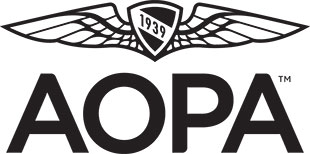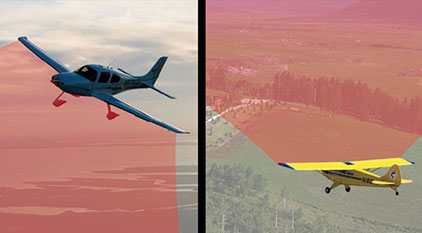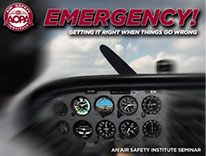Pilot Protection Services
Legally speaking
Relying on photos of maintenance entries
If your mechanic sends you a photograph of the latest entry in your aircraft’s maintenance records, can you rely upon the photograph to ensure that the aircraft has been approved for return to service—or do you need to see the records in person?
FAR 91.405, Maintenance Required, states that each owner or operator of an aircraft “shall ensure that maintenance personnel make appropriate entries in the aircraft maintenance records indicating the aircraft has been approved for return to service.”
In a recent interpretation of this FAR, the FAA’s office of chief counsel states that viewing a photograph of the entry sent by fax, email, or text would allow the owner or operator to meet the regulation’s requirement, as this “would provide the same level of assurance as if the operator viewed the entry in person.” However, there is a common-sense caveat.
The FAA cautions that owners or operators must use their judgment in relying upon pictures to ensure that the mechanic made the entry. More specifically, the photograph must have “sufficient indicia of accuracy or reliability that the entry is, in fact, in the aircraft’s maintenance records” and that “[s]ome of this judgment may include the owner’s or operator’s degree of confidence in the integrity of the mechanic.”
In light of modern technology, this FAA interpretation is quite practical.
Jared Allen is an in-house attorney with AOPA’s Legal Services Plan and an instrument-rated private pilot.
Association reveals new logo, new tag line
 AOPA is updating its brand as part of ongoing efforts to build the pilot community. The association unveiled a new logo and tag line: “Your freedom to fly.”
AOPA is updating its brand as part of ongoing efforts to build the pilot community. The association unveiled a new logo and tag line: “Your freedom to fly.”
The new logo is a variation on the association’s previous logo and includes wings, the AOPA name, and—in some applications—a shield emblazoned with 1939, the year AOPA was founded. The design of the wings and the font used for AOPA both have been updated.
“It’s important for an organization like AOPA not to stagnate. The world we fly in is changing, and we need to stay ahead of that change. Much of what we’re doing today, and what we’re planning for the future, revolves around creating an environment that gives people of all ages the opportunity to enjoy aviation and all it has to offer,” said AOPA President Mark Baker. “We want our brand to reflect that forward-looking approach, sense of optimism, and pride in belonging to the greatest pilot community in the world.”
AOPA’s new brand image appears on association publications, websites, and other materials.
Answers for pilots
Tax tips for aircraft owners
Whether you are considering buying your first airplane or you are a seasoned aircraft owner, tax considerations are an important aspect of ownership. Aircraft owners who used their aircraft for business purposes in 2015 may be eligible for income tax deductions. Find out more in this month’s online Answers for Pilots (http://www.aopa.org/answersforpilots). If you have questions about aircraft ownership or another aviation-related topic, give us a call, Monday through Friday, 8:30 a.m. to 6 p.m. Eastern time, 800-USA-AOPA (872-2672) or email [email protected].
Talk about flying, earn rewards
AOPA’s new rewards program encourages you to do what you love most: talk about flying. Earn points by getting your fellow pilots to join the world’s largest general aviation association. You’ll also earn points for sharing information about AOPA through emails, Facebook, and Twitter. Visit www.aopa.org/Rewards to learn more and start earning points today.
198,860: Total aircraft in the general aviation fleet, 2014.
AOPA FOUNDATION
Donate your airworthy airplane to the AOPA Foundation: Bypass the hassle of selling, and gain a tax benefit while fueling GA’s future with your donation.
Air Safety Institute
Collision avoidance
New video offers strategies to boost ‘see and avoid’ concept

Midair collisions are far less common than we may think. But while the risk is small, it is always there. So it’s helpful to know where and when most midairs occur, and to have a strategy that will minimize your chances of being involved in one.
When you think about it, it makes sense that the greatest risk of a collision would be a place where the most aircraft share the least airspace—such as near an airport. Statistics tell us that more than half take place within five miles of an airport, and more than 95 percent occur below 3,000 feet of the ground during the day. Other areas of high traffic alert are near waypoints and navaids used for practice instrument approaches. During VFR conditions, these are places where many aircraft potentially share an airway to and from a navigation point, often without the benefit of ATC separation.
How do we arm ourselves with a solid strategy to reduce our risk of a midair? Early in flight training we learn about the “see and avoid” concept, which is still the primary means of avoiding a collision with other aircraft. But there are many other tools at our disposal.
Watch Collision Avoidance: See, Sense, Separate to understand the value of using navigation and position lights and making position calls five and 10 miles out from an airport or navigation fix. The video discusses ways to listen to and look for other aircraft in the area, to make yourself more visible, and how and when ATC can be helpful, as well as limitations of ATC assistance—even at towered fields—in a nonradar environment.
This video was made possible by the Canadian Owners and Pilots Association Flight Safety Foundation and the Donner Canadian Foundation.
 Don’t be a fuel fool
Don’t be a fuel fool
Stiff headwinds or unexpected routing changes can put you in a potential danger zone of getting low on fuel before reaching your destination.
Should you tell air traffic control? What should you say? Words matter; and what you say is as important as when you say it.
In Ask ATC: Minimum Fuel v. Fuel Emergency, air traffic controllers explain how they can help when things don’t go as expected.
Prime your next flight with “ASI’s Golden Hour Fuel Reserve” to land with at least one hour of fuel in the tanks.
 ASI Seminar
ASI Seminar
‘Emergency! Getting it Right when Things Go Wrong’
Visit the website for dates and locations near you.
Member products
Buying an aircraft
Four keys to determining your creditworthiness
When a lender is determining whether to extend credit to you, income is just the beginning. Lenders look at your financial history in these additional ways.
Credit score: Your credit score helps determine whether you should qualify for credit, what the interest rate should be, and what the credit limits should be. An ideal credit score is at least 720, and it should not be lower than 650.
DTI: DTI stands for debt-to-income ratio and is the amount of money you owe in any given month. That number is divided by your gross monthly income (income before taxes are deducted) to determine your DTI. Lenders like a DTI under 40 percent (including the proposed aircraft loan).
Liquidity: Liquidity refers to how easily an individual can meet financial obligations with liquid assets (assets that can be quickly bought or sold without affecting the price). Cash is the most liquid of assets, followed by money market funds, checking accounts, and savings accounts. Illiquid assets would be items such as art collections or rare books, stamps, wine, jewelry, or coins. One of the least liquid assets is real estate, since it could take months to convert a real estate asset into cash. Cash is king!
Unsecured debt: When debt is unsecured, it means that there is no property or equipment attached as collateral. Your mortgage is a secured debt in that if you don’t pay your mortgage, the bank can recoup its losses by seizing your house. Try to keep unsecured debt to a minimum.
AOPA Aviation Finance understands that securing an aircraft loan can be daunting. Our goal is to make it easier to finance airplanes. Our experienced team of aviation-savvy loan experts is ready to discuss your situation. Visit aopafinance.org or call 800-62-PLANE (75263) to determine which loan works best for you.
Realizing her dream
Amy Munizzi has fond memories as a preteen of watching her ex-Air Force dad parachute on Saturdays. “I fell in love with aviation then, but life and circumstances got in the way,” she says. After she lost her father to Parkinson’s disease, she says, “I realized it was time to live this dream.”
Forty years after that love of aviation was sparked, Munizzi is a student pilot. She soloed in June 2015.
“I found buying AOPA insurance a completely painless task, and that’s saying a lot for the purchase of insurance, since it’s often confusing. The process, options, and why I might want or need one thing or the other was easy to understand. Paying for it online was a breeze and I was finished with the whole thing in about 10 minutes,” she says. “As soon as I got to the airport I recommended it to several other students. Turned out, they began requiring renters insurance from all of us that week, so it was a timely purchase.”
No matter what you fly or for what reason, AOPA Insurance has the right policy for you. For more information or to apply for a policy, visit aopainsurance.org/rent. You may qualify for a 5-percent discount just for being an AOPA member, and revenue from AOPA Insurance programs goes right back to AOPA to help grow and protect general aviation.


